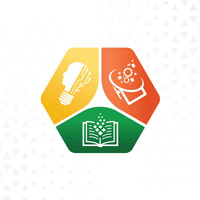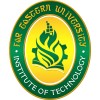Seminars and Trainings

Attendee
AI in the Workplace: Practical Applications for Educators and Associates to Improve Teaching and School Management
Awarded by Educational Innovation and Technology Hub on August 14, 2024
View Credential
Attendee
Review of Complex Engineering Problems
Awarded by FEU Tech College of Engineering on August 12, 2024
View Credential
Attendee
Data Privacy Act Awareness Seminar
Awarded by FEU Tech Human Resources Office on August 07, 2024
View Credential
Attendee
Personalized Education: A Workshop on Cognitive Diagnosis Modeling Using R Programming
Awarded by Educational Innovation and Technology Hub on April 12, 2024
View Credential
Attendee
Nanolearning: Bite-Sized Content as the Next Big Trend in Contemporary Education
Awarded by Educational Innovation and Technology Hub on December 12, 2023
View CredentialResearch Publications
Conference Paper · DOI: 10.1109/HNICEM60674.2023.10589154
IoT-Based Energy Management and Power Outage Detection System for Commercial Buildings
2023 IEEE 15th International Conference on Humanoid, Nanotechnology, Information Technology, Communication and Control, Environment, and Management, HNICEM 2023, 2023
![]() Nino E. Merencilla
Nino E. Merencilla
![]() Manansala E.T.
Manansala E.T.
![]() Bayono M.E.P.
Bayono M.E.P.
![]() Nino U. Pilueta
Nino U. Pilueta
![]() Ablaza D.D.
Ablaza D.D.
![]() Flores J.K.D.
Flores J.K.D.
![]() Perillo J.S.
Perillo J.S.
![]() Reyes A.V.
Reyes A.V.
As the Philippines advances industrially, the nation's demand for electricity is soaring. In response to this challenge, the proponent seeks to devise an Internet-of-Things (IoT) solution that addresses the imbalance between electricity supply and demand through a cost-effective yet highly accurate energy management system for commercial and industrial sectors. The idea is to curtail energy consumption by enabling building managers to remotely control shared area resources, thereby resulting in a corresponding decrease in energy expenses. The designed prototype will also encompass a feature for power interruptions both blackout and brownout detection and notification, which will allow building supervisors to implement electrical outage procedures during necessary circumstances. When power is restored, the system will initiate a 'rolling' procedure to prevent sudden load spikes on the power grid by first restoring power to areas known for lower current draw. This approach differs from the typical scenario where, after a blackout, all devices power on at once when service is restored, escalating the risk of another brownout or potentially even an electrical fire due to an overloaded grid. In the event of a power outage, the system will rely on an alternate power supply to maintain its operation. The envisioned product is designed to be portable and transferable, meaning it can be conveniently installed in any commercial building and relocated as required. Moreover, the design contemplates a scenario where several such prototypes can be placed within a single building and individually controlled remotely via web application.
Conference Paper · DOI: 10.1109/HNICEM60674.2023.10589229
Visual Acuity Assessment Device for Mute and/or Deaf-Mute Individuals
2023 IEEE 15th International Conference on Humanoid, Nanotechnology, Information Technology, Communication and Control, Environment, and Management, HNICEM 2023, 2023
![]() Bayono M.E.P.
Bayono M.E.P.
![]() Cariaga J.P.
Cariaga J.P.
![]() Nino E. Merencilla
Nino E. Merencilla
![]() Maribel A. Misola
Maribel A. Misola
![]() Pantallano B.E.D.
Pantallano B.E.D.
![]() Tiu J.D.
Tiu J.D.
![]() Villanueva V.E.D.
Villanueva V.E.D.
![]() Yango P.E.S.
Yango P.E.S.
This paper is introduced as an exploration of how to utilize advanced technology and computing can assist individuals who are mute and/or deaf-mute individuals. It recognizes the rapid progress in technology and computing, which opens up opportunities to address the unique needs of this particular group. The research question addressed in this paper is how we can use accurate time sign language recognition to assist people suffering from mutism and deafness to make the healthcare system more inclusive and accessible to them, especially when taking visual acuity assessments which is normally needed for acquiring eyeglasses. The system comprises a microprocessor unit and a Python-based program that is used to facilitate the visual acuity assessment properly and accurately. The keyfindings of this paper suggest that realtime sign language recognition technology can significantly improve the healthcare experience for individuals who are suffering from mutism and deafness by facilitating communication and reducing barriers to access facilities for eye health care to person with disability like person who are mute and deaf. The study also highlights the need for further research and development so as to improve the accuracy and efficiency of sign language recognition technology for people who are mute and deaf.
Conference Paper · DOI: 10.1109/DASA54658.2022.9765227
A Transfer Learning-Based System of Pothole Detection in Roads through Deep Convolutional Neural Networks
2022 International Conference on Decision Aid Sciences and Applications, DASA 2022, 2022, 1469-1473
![]() Manalo J.M.C.
Manalo J.M.C.
![]() Alon A.S.
Alon A.S.
![]() Austria Y.D.
Austria Y.D.
![]() Nino E. Merencilla
Nino E. Merencilla
![]() Maribel A. Misola
Maribel A. Misola
![]() Sandil R.C.
Sandil R.C.
Pothole detection is critical in defining optimal road management solutions and maintenance. The researcher used deep learning and yolov3 to create a pothole detection system in this study. A deep learning algorithm called YOLOv3 is used to develop a model that can successfully identify potholes. The detection model had an average precision of 95.43%, and identified potholes had accuracies ranging from 33% to 69%, which is to be anticipated given the numerous various forms and sizes of potholes.
Conference Paper · DOI: 10.1109/ICCIKE51210.2021.9410715
Shark-EYE: A Deep Inference Convolutional Neural Network of Shark Detection for Underwater Diving Surveillance
Proceedings of 2nd IEEE International Conference on Computational Intelligence and Knowledge Economy, ICCIKE 2021, 2021, 384-388
![]() Nino E. Merencilla
Nino E. Merencilla
![]() Sarraga Alon A.
Sarraga Alon A.
![]() Fernando G.J.O.
Fernando G.J.O.
![]() Cepe E.M.
Cepe E.M.
![]() Malunao D.C.
Malunao D.C.
People are anxious about the potential dangers of scuba diving and like in all sports, there are dangers involved in it. Typically, people think sharks and shark attacks are the dangers of scuba diving, as sharks are one of the ocean's biggest predators, and the great white shark, in particular, is one of the primary threats to divers. The study proposes a deep learning approach to shark detection for underwater diving surveillance. A large collection of great white sharks' datasets underwater is used by the system for training as sharks are hard to differentiate from other sharks like animals in an underwater environment. A YOLOv3 algorithm that uses convolutional neural networks for object detection, multiscale prediction, and bounding box prediction through the use of logistic regression is used in the study. And with this approach, the testing of the shark detection system generates a good result.
Conference Paper · DOI: 10.1109/HNICEM54116.2021.9731834
Smart Stick for the Visually Impaired Person
2021 IEEE 13th International Conference on Humanoid, Nanotechnology, Information Technology, Communication and Control, Environment, and Management, HNICEM 2021, 2021
![]() Nino E. Merencilla
Nino E. Merencilla
![]() Manansala E.T.
Manansala E.T.
![]() Balingit E.C.
Balingit E.C.
![]() Crisostomo J.B.B.
Crisostomo J.B.B.
![]() Montano J.C.R.
Montano J.C.R.
![]() Quinzon H.L.
Quinzon H.L.
Blindness is an impairment in which the patient requires constant assistance with even the most basic of everyday tasks particularly in travelling alone without occurring accident. The project was designed to improve the level of independence of a visually impaired individual in travelling, utilizing the Smart Stick for the Visually Impaired Person will help them travel in flat and rugged terrain with high level of confidence as not to have accidents or injuries. The smart stick provides an obstacle detector and a speech synthesizer mechanism to guide the individual to certain obstacle and a change in the terrain elevation, it also helps the individual to locate the smart stick easily if they accidentally dropped or misplaced it, the device will create a sound through the buzz module. The following modules were also included; Obstacle detection, Terrain detection, Hand detection, Speech Synthesizer, and Sound module, all of which are connected to the Arduino Nano microcontroller. The prototype was tested considering all modules as mentioned above, having a 95 to 100 percent success rate for 20 testing trials in every module of the system. The study had presented an alternative way for the visually impaired individual to travel safely. The researcher recommended for future enhancement of the device to be paired with smart phones or an application based-GPS for tracking and monitoring.


